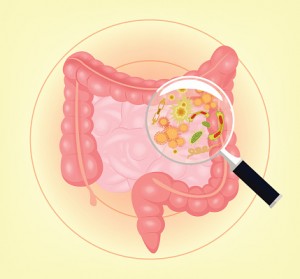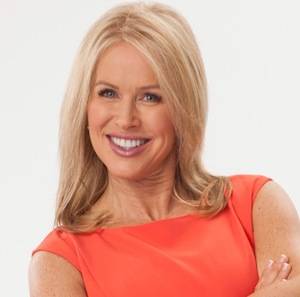Get Sugar Smart
Over the past couple of years, I have developed a food obsession. Not as in "I am obsessed with grape tomatoes or mint chocolate," which I am. No, I've set my sights on sugar. Woe is the person who mentions the American diet or diabetes or processed foods, because that's my cue to share the not-so-sweet way that our diet has been sugarjacked.
Sugar-what?
Sugarjacked. Our foods are being gunked up with hidden sugars in ways--and to an extent--that most of us don't realize. If you are over 40, you are probably like me and still tend to think about sugar as we did when we were kids: as a pure, sweet treat that makes dessert taste like, well, dessert.
But in the past 40 years, new forms of sugar have crept into food processing at an astounding rate. Now most American adults consume nearly 25 teaspoons of added sugar every single day. And let's be clear: These are sweeteners added to food as an ingredient, not sugars that occur naturally, as they do in fruit. What's driving this increase is not just supersize cheesecakes or gigantic Frappuccinos. Sugar in its many forms is now showing up by the tablespoon in pasta sauce, in "healthy" breads, and in gravy, soups, and frozen entrées--as well as in yogurt and low-fat salad dressing. I've seen seemingly healthy breakfast cereals contain 10 different types of sugar. Ten!
Think you can spot all of them? Good luck. Sugar now goes by more than 50 different names on ingredient labels, from obvious ones such as "evaporated cane syrup" to the more obscure, like "rice bran syrup." And learning those names is only one step in finding out if your diet is exceeding the recommended limit of daily added sugar (6 teaspoons for women, 9 teaspoons for men). First, you have to allow yourself to consider that you may need a sugar reality check.
Last year when I was writing The Sugar Smart Diet, we recruited volunteers to put our 32-day plan to the test. We asked them to keep a diary for a few days so they could gain some insight into their own sugar intake. One panelist, who was not overweight but suffered nonstop food cravings, discovered that he was consuming more than 250 grams (g) of sugar a day--more than 10 times the amount recommended by the American Heart Association! He had no idea.
It could be that maybe--just maybe--you, too, are taking in more than you realize. Stop the Madness
As the editorial director for Prevention, I consult with many of the country's leading experts about the health issues plaguing Americans, and these experts are saying that our overconsumption of sugar is contributing to a tsunami-size national health crisis. That's because drenching your body in a continuous flow of sugar has far-reaching health implications.
Many of us struggle with weight, no doubt in part because consuming a wheelbarrowful of added sugar a year adds up! Of course, too much sugar has also been linked to diabetes. Is it any wonder that more than 100 million Americans have diabetes or prediabetes? Research also fingers sugar overload in the development of high LDL ("bad") cholesterol, high blood pressure, heart disease, inflammation, and potentially early-onset Alzheimer's--even premature wrinkles.
And what really concerns me is the new research that's coming out on some of the different types of sugar. In particular, early research on fructose--a form of sugar found naturally in fruit and foods like honey but also in white table sugar and high-fructose corn syrup (HFCS)--makes it look like the devil of sugars. Now, don't get me wrong, fructose in real fruit is a good thing for the body (think fiber and nutrients), but on its own, fructose looks like pure trouble: It appears to stimulate the appetite, speed up lipogenesis (the body's fat-making ability), pack on belly fat, and stimulate the production of compounds that wreak havoc on the body. Much of the research on fructose is preliminary, but it gives me pause, because HFCS is the primary sweetener used in soft drinks in the United States and gets its name by having a high concentration of fructose.
And don't even get me started talking about fructose and the liver! Suffice it to say that fructose is primarily metabolized by the liver (whereas, glucose can be metabolized by any cell in the body), and now doctors are seeing huge numbers of people suffering from nonalcoholic fatty liver disease. In fact, one estimate is that 30 percent of adults may have inflamed livers due, possibly, in part to overconsumption of fructose.
So what can you do? Get smart and eat clean. Take a close look at your diet and kick out the hidden sugars so you stay in the safe zone of about 25 g of added sugar a day. Go Clean, Not Crazy
One of the truly amazing things about developing The Sugar Smart Diet was seeing what just four weeks of clean eating can do. The volunteers' results were spectacular. That test panelist who was consuming 250 g of sugar a day? He dropped 36 cholesterol points and no longer has a chattering chorus of food cravings in his head.
Another panelist lost 16 pounds during the first month. And, never an athlete before, she just participated in her first half-marathon and told me that she has dropped 37 pounds: "I dieted for 45 years and always got derailed by hunger and food cravings--until this plan." Of course, following The Sugar Smart Diet's step-by-step plans made it easier for these folks, but the bottom line for everyone: Cleaning out sugar overload works. It means a slimmer figure, more energy, and radiant skin. It also means you're taking your health seriously, preventing diseases that can take years off your life (as they add inches to your belly).
The really good news is that you don't have to go overboard. Once you get what I call sugar smart and know where sugar is hiding in your diet, you can make smarter choices. You can decide when and where you want to eat sugary foods and what kinds of sugar are acceptable to you. You can even reclaim your right, as I did, to enjoy sugar the way you did as a child: as a simple, delectable treat. So this year, I urge you to right-size sugar in your diet. I do believe you'll be amazed at the results. Your health, energy, and waistline will thank you.

Anne Alexander, author of the New York Times bestseller The Sugar Smart Diet, is the editorial director of Prevention, the leading healthy lifestyle brand in the U.S. (with a total readership of 8.7 million in print and more than 6 million online). She is also the author of the New York Times bestseller Win the Fat War and a busy mother of three children.
-
Why Is Childhood Obesity Increasing?
Almost two thirds of Americans are considered overweight or obese. Som
-
Simple Steps to Lose Weight
Being overweight is something that affects us both physically an
-
Low Fat Diets Not As Beneficial As Once Thought
The Benefits of Low Fat DietsIt has been studied and surmised for deca
-
What Is Your Healthy Body Weight
Everywhere we look in the western world we are inundated with pictures
-
Grannys Remedies
Growing Old GracefullyPlease note:THIS PUBLISHER IS NOT PRESCRIBIN
-
Can You Really Lose Weight Fasting?
Okay so we know that you want to lose we
- DON'T MISS
- Is Losing Belly Fat Really That Necessary?
- International No Diet Day 2016
- 7 Diet Tips For Rapid Weight Loss
- Does Evercleanse Ever Cleanse?
- Can Seeds and Nuts Promote Weight Loss?
- Fitness Solutions For Women On The Go
- Details and Facts about HgH Supplements
- Six Reasons You Are Not Losing Weight
- How Many Workouts to Burn Fat
- Exercise The Abs_Tips for Stomach Workouts




